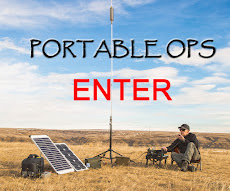Sunday, May 04, 2014
Emergency Prepardness - The First 72 Hours
One of the reason's that I am comfortable and not concerned by the backroads that I travel down, is the fact that when I am away from home, I am always prepared for any emergency situation that I may find myself in.
 I am making reference to the fact that I keep my mobile loaded at all times, with enough emergency equipment to keep me safe from any natural disasters, or other emergencies that I could possibly have got caught up in.
I am making reference to the fact that I keep my mobile loaded at all times, with enough emergency equipment to keep me safe from any natural disasters, or other emergencies that I could possibly have got caught up in.Besides my 72 hour go-kit, I also have a full compliment of camping equipment, as well as a very well equipped survival kit.
The primary purpose of a 72 hour go-kit is to allow one to evacuate quickly if a emergency or disaster should strike. It is therefore prudent to gather all of the materials and supplies that might be required to do this into a single place, such as my go-kit described here.
The recommendation that a emergency go-kit contain enough supplies for seventy-two hours arises from advice from organizations responsible for disaster relief and management that it may take them up to seventy-two hours to reach people affected by a disaster and offer help. The kit contents may vary according to the region of the user, as someone evacuating from the path of a hurricane may have different supplies from someone who lives in an area prone to tornadoes, wildfires, or blizzards that may occur throughout our winter months.

In addition to allowing one to survive a disaster, a emergency go-kit may also be utilized when sheltering in place as a response to emergencies such as house fires, blackouts, tornadoes, and other severe natural disasters that mother nature may throw at you, including the floods that occurred here in southern Alberta in June of 2013.
The suggested contents of a emergency go-kit vary, but the following essentials are included in my go-kit, although there is more that I carry in my mobile, not listed here.
Enough food and water to last for 72 hours. This includes water for washing, drinking and cooking. The recommendation is for 2 to 3 litres per person per day for drinking plus an additional 2 litres per person per day for cleaning and hygiene (I use a 10 liter Scepter military water can for my needs).
Non-perishable food
Water purification supplies, such as a water filter pump included in my go-kit ( I also carry Iodine tablets as a back-up to my water filtration pump.)
Cooking supplies ( I have several choices for stoves, gas powered and otherwise)
A first aid kit ( choose the size required for your group )
Enough medicine to last an extended evacuation period.
 Fire starting tool ( matches, ferrocerium rod, lighter, etc.)
Fire starting tool ( matches, ferrocerium rod, lighter, etc.)Map and compass, with travel information ( a gps receiver is nice, but back it up with a compass and map.)
Standard camping equipment, including sanitation supplies
Weather appropriate clothing ( poncho, headwear, gloves, gum boots, etc.)
Bedding items such as sleeping bags ( bags rated for at least -25C if you are travelling in the winter months in Alberta.)
Battery or crank-operated radio ( also, if a ham, a full compliment of ham gear )
Lighting (battery or crank operated flashlight, glow sticks)
Cash and change, as electronic banking transactions may not be available during the initial period following an emergency or evacuation
Positive identification, such as drivers license, a birth certificate and/or passport.
Fixed-blade and folding knife, as well as a camp hatchet or small axe.
Duct tape and rope/paracord
Wire for binding and repairing things
Plastic tarps for shelter and water collection
 I could make due for several weeks or longer with my go-kit, and indefinitely with a extra 20 minutes of preparation before heading out. I always keep my go-kit in my vehicle, so that I have it along with me for the times that it may be required.
I could make due for several weeks or longer with my go-kit, and indefinitely with a extra 20 minutes of preparation before heading out. I always keep my go-kit in my vehicle, so that I have it along with me for the times that it may be required.I also carry food-stuff in my go-kit, and stored in a military waterproof container as shown in the photos, and in the winter months, a full complement of clothing required for survival when the unexpected happens and your stranded. I also carry a combination folding shovel/pick axe, as well as a snow shovel that packs away until needed, and a snow saw for building snow shelters in the winter months.
If your someone new to assembling your first emergency go-kit, it can seem like a arduous task. Everybody you read about has been tweaking theirs for months or even years and has built up a pile of gear. It may be hard for you to know where to start, but if you cover all of the basics with a go-box such as the one I have described here, you will still be much better off while out and about, than 99% of the people out there.
I am constantly updating my Emergency Prepardness 72 hour go-kit
, and you may wish to check it out here...
http://www.jerryclement.ca/HamRadio/HamRadio/i-xQMjftP
Note: All photos expand




















No comments yet